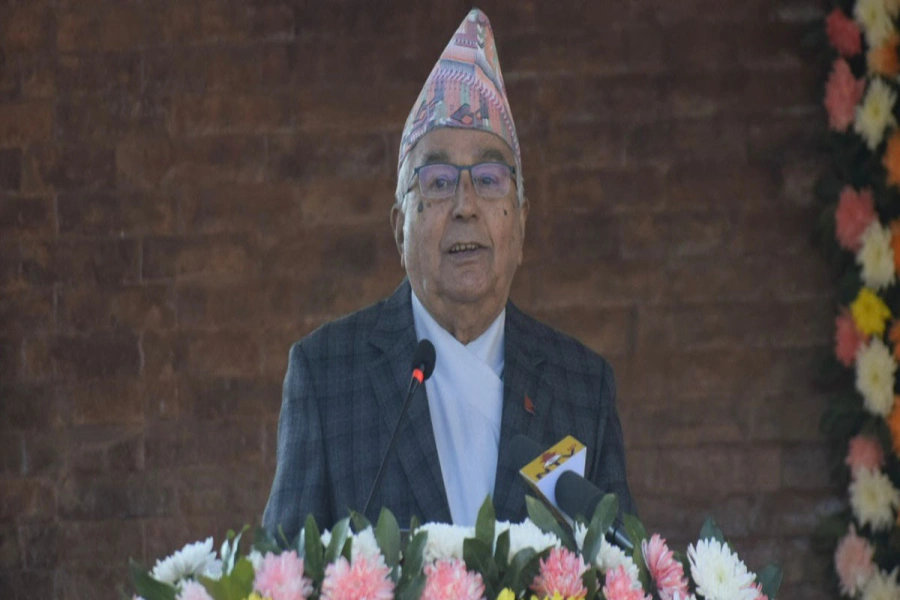Recent estimates show that more than one billion acres of tropical forests have disappeared in the past forty years, equivalent in size to more than half of the continental United States. Amid serious concerns over high rates of deforestation and its consequences, forest management issues have been at the forefront of development policy discussions around the world. While this led the Government of Nepal to carry out community forestry (CF) initiatives, empirical evidence on equity and distributional benefits from community-managed forests is rather mixed.An empirical study of socioeconomic repercussions of community-managed forestry is especially relevant in the context of Nepal's substantial shift in forest management policies over the years. In 1957, the government nationalized all forests holdings of greater than three acres in the hilly and mountainous areas. This led to massive government revenue from timber exports and ultimately an increase in food production.
However, the government passed the Forest Act in 1993 to reduce deforestation and environmental degradation. The Act led to transfer of accessible forestland from the government to respective local communities through several forest user groups. Currently, forests cover almost 40 percent of the country, one-fourth of which are community-managed forests.
Recent data suggest there are over 14,000 community forest user groups (CFUGs) throughout Nepal, with some 159, 876 members and covering 1.2 million hectares.
Given that almost 20 percent of forest cover in developing countries is currently reserved for community and indigenous groups, the global conservation community is increasingly concerned about social welfare implications of community-managed forestry. More important, proponents claim that CF program interventions lower ecological degradation and enhance the supply of basic forest products for subsistence needs. Conversely, critics argue that community forestry in Nepal has been more successful in forest conservation than in improving rural livelihoods.
Recent findings from Demographic and Health Surveys (DHS) show that over 80 percent rural Nepali households rely on firewood for cooking. In addition, reports on community forestry programs in Nepal have focused mostly on improvement in environmental quality. Specifically, satellite imageries demonstrate that community-based forest management in Nepal has resulted in more efficient use of forest resources, with a significant decline in forest fires and slash-and-burn agricultural practices.
Notably, forest use in Nepal is directly linked with food and energy needs of rural inhabitants, particularly the poor. Yet, there remains a dearth of empirical data on the socioeconomic impacts of CF initiatives in Nepal. Even though several qualitative studies have found positive effects of community forests in the middle hills, anecdotal evidence suggests that forest products available from community-managed forests may not be equitably distributed among forest users groups.
While policymakers laud CF initiatives as pro-poor, opponents claim that tangible benefits from community-managed forestry programs are disproportionately higher for rich and elite groups relative to poor and marginalized groups. Recent research on the link between community-managed forest use and household welfare, however, offers room for optimism. Specifically, female-headed households and low caste groups appear to benefit more from community-managed forests than other population subgroups. Together, these new findings based on Nepal Living Standards Survey (NLSS) highlight the creation of community-managed forests as an effective means of addressing food insecurity with benefits going to the most disadvantaged groups.
Unfortunately, poor migrants from the middle hills and internally displaced individuals are sometimes unable to afford CFUG membership fees. Although still able to gain access to products from community-managed forests, non-members are disadvantaged by having to pay more. While this remains to be validated with documented evidence, poorer households moving out of villages after they fail to acquire CFUG membership cannot be ruled out.
It is worth noting that community forestry activities have increased the ability of poorer households to generate cash income, utilizing the resources offered by land provided in community forests and soft loans from community forestry user group funds. Moreover, substantial focus on governance has enabled the poor and socially excluded to raise their voices during discussions on forest management and community development.
In sum, one should be cautious when extrapolating from Nepal's successful efforts to other developing countries, despite positive association between community-managed forests and improved socioeconomic outcomes. While the need for a more comprehensive study on the impact of community forestry on rural poverty persists, there is increasing evidence that forest products are particularly important to more vulnerable members of a community. Under these circumstances, community-managed forests can contribute to improved food security, specifically for women and low caste households.
The author is a graduate student in resource economics
jpaudel@umass.edu
A silky-smooth soup with a big dose of healthy greens








































